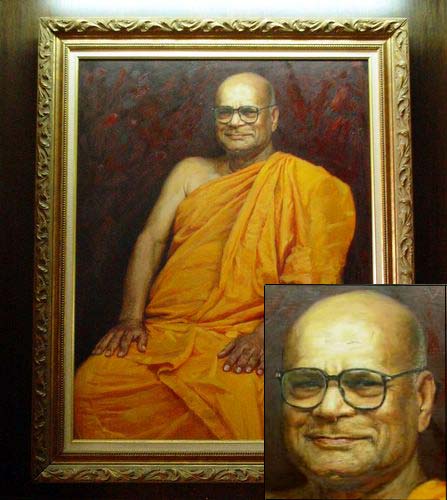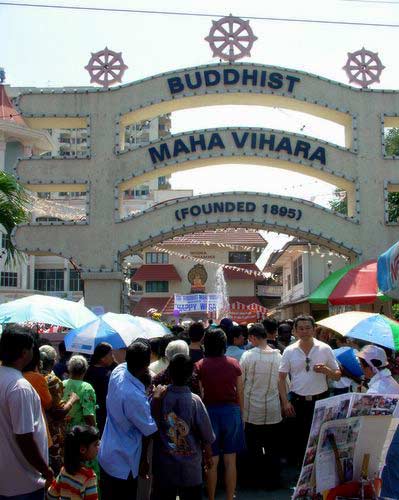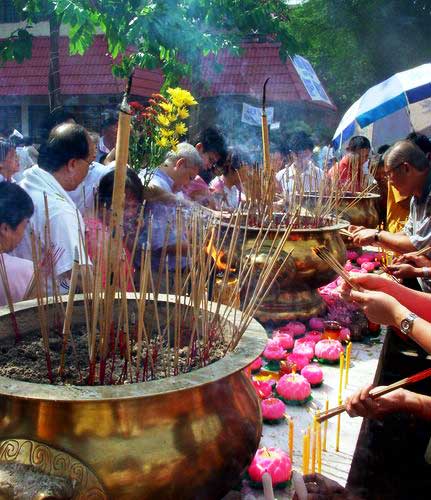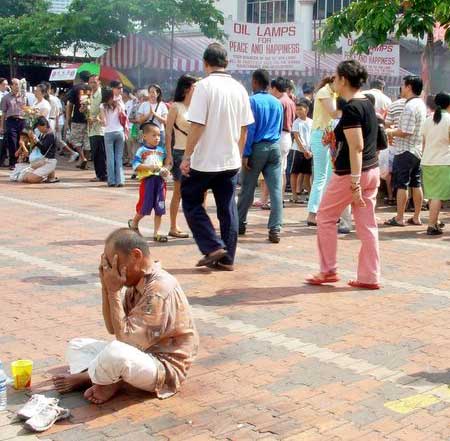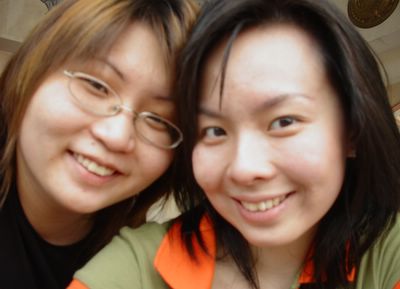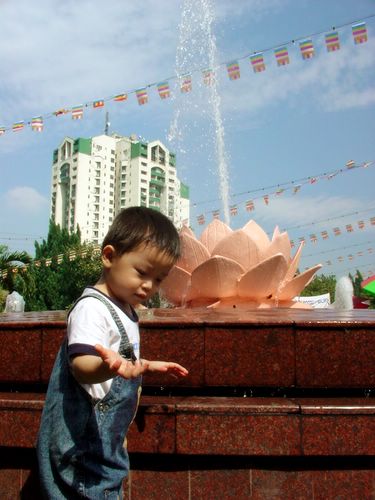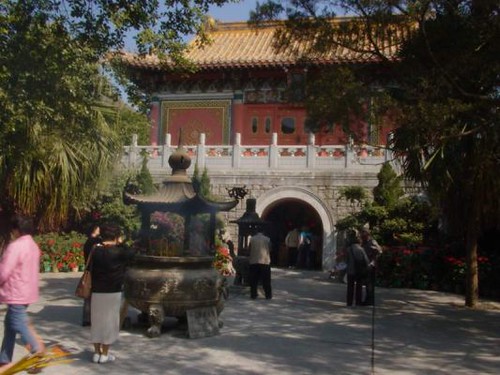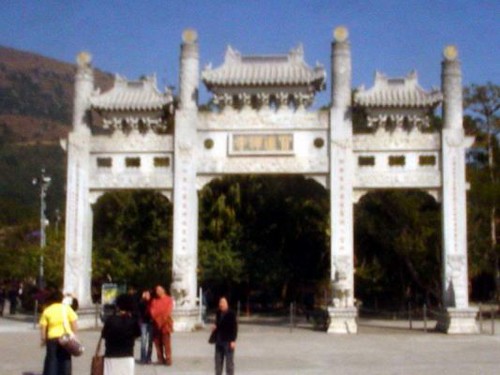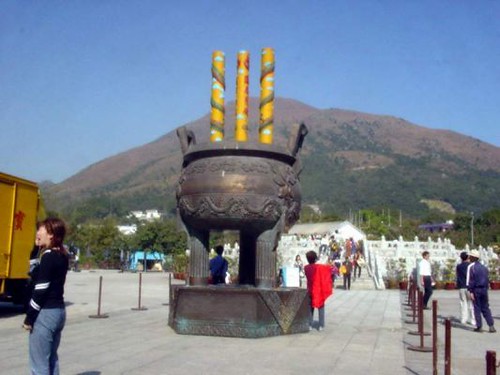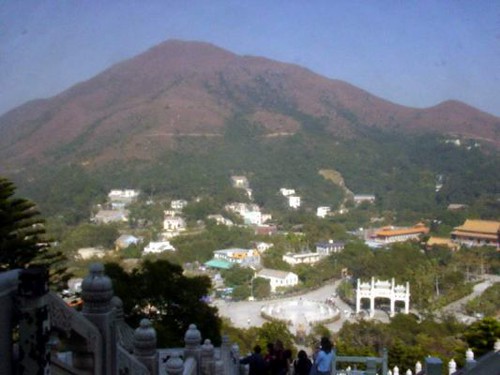Faith is a funny thing. Alas it’s seldom a funny ha-ha but more a peculiarity that makes some of us go, what the… . The stories you’ve heard (and will continue to hear) just seem weirder and out-of-place everyday. This be the time to quote Mark Twain, “truth is stranger than fiction” — words that are often the subject line of mass-forwarded e-mails. When you receive such e-mails, you automatically brace yourself to read extraordinary (true or fake) accounts of… uh, I don’t know… grown elephant steps on boy and he miraculously lives or something along those lines.
I slightly digress, but that was what’s on my mind when I read today’s The Star report on fake monks. Surely you know what I’m talking about. ‘Buddhist monks’ in robes going around town with an alms bowl asking for money donations. In return for your (misguided) generosity, you’d get a threaded bracelet, a bookmark or an amulet. Then you go on your way, gleefully patting yourself on the back for having done a good, karma-redeeming deed.
Dude, you’ve just been conned.
First off, I understand that not everyone knows everything about Buddhism and its followers’ way of life. You were probably an out-of-towner, most likely a tourist from another country, not wanting to offend the sensibilities of local customs. I am like that as well, especially if the place I’m visiting is, for lack of a better word, exotic. My reasoning is more selfish — as someone who partially believes in black magic and the supernatural, I don’t want to slight anyone for fear of having evil charms placed on me. When I was in Bangkok, I was especially aware and mindful of my surroundings. You know, stories…
Or you could be a non-practising Buddhist/ Taoist, probably born into a Buddhist/ Taoist family and your grandparents/ parents offer daily incense to ze gods. You have no understand, knowledge or interest in the religion, but subconsciously you feel somewhat bad because of your upbringing. Maybe something is missing and by doing a small but good deed, Lady Luck might have sex with you. I feel that way sometimes (but not the sex part).
Or a myriad other reasons. I don’t know, maybe it’s just a small amount of money and it doesn’t matter to you in the grand scheme of things. Well, it does. As long as people continue to give money to these fake Buddhist monks, they unwittingly encourage the growth and expansion of the scam. When it comes to charities that you are not sure about, you could always give the excuse that you’d contact the charity directly should you wish to donate, then not feel too bad about it. Religion clouds people’s minds because that’s the nature of religion. Sometimes it’s good, sometimes it’s bad, sometimes it doesn’t matter to me as long as it’s not in my face.
In this case it does matter to me, at least a little. Enough to upset me for a short while and to write this blog post. I don’t like it that something I believe in (philosophically at least) gets twisted like that. When I was old enough to make my own decisions, I voluntarily joined the Batu Pahat Young Buddhist Fellowship and became a rather active member, even holding certain positions in the society. Honestly it was more of a social thing — I participated because I had friends there and it was a great excuse to get out of the house. A big part of my teenage years involved a lot of YBF activities.
Of course it wasn’t all fun and games. We learned the basics of Buddhism, its history, the Buddha’s teachings and so on. I even sat for a a basic exam on Buddhism and I have no idea where the certificate is now. I consider myself lucky to have been surrounded by mentors and peers who are liberal-minded and taught me a lot of things. Imagine if I was in an environment where you have to follow everything they say to the dot and you can’t think or choose for yourself! True that there’s a lot of tolerance in Buddhism, but I know and have heard of people going to the extremes. Different interpretations, personalities and cultures it seems.
That was when I learned that the Buddhist monk’s alms bowl is only meant for food and not money. Back in the days, the Buddha’s disciples would go around town and country and people would give them food. At first they did this three times a day, then the Buddha limited it to two — once in the morning and the second at noon so the people would not be too burdened by the offerings. Even today, Buddhist monks partake in only two meals a day. When I asked my friend-turned-monk Bhante Sumana how he managed it, he said that it was difficult at first because you are so used to having three meals a day. At night if he got hungry, he’d make himself a cup of Milo. Then you gradually adjust yourself to a life of two meals a day and it ceases to be a problem. Dude lost a lot of weight too.
Point One: Genuine Buddhist monks will never ask you for money in lieu of food to be placed in their alms bowl.
I have a vague recollection about monks’ robes. In order not to misinform you who may still be reading this long blog post, I called up Bhante Sumana for reaffirmation. He said that at any one time, the Buddhist monk is allowed two saffron robes and a sarong in his possession. It used to be that the monks would have to make their own robes out of donated cloths, but these days worshippers would just buy ready-made robes. This self-tailoring vs ready-made topic is only cultural and has nil to do with the practise of Buddhism. The market price for each robe is RM 100 – RM 150, depending on the quality of the cloth. Once a year at the end of a retreat session after the rainy season (July – October), a new set of robes will be given to the monk who displayed exceptional qualities during the retreat as a reward. When Bhante Sumana entered monasticism, we presented him with a couple sets of robes as dana.
Point Two: Genuine Buddhist monks will never ask you for money for new robes. If you want them to have new robes, you buy it for them and not give them the money to buy it.
These days (in our country at least), life is a lot easier for monks and nuns. There are numerous temples, monasteries and nunneries with resident monks and nuns. A couple of years after becoming a monk, Bhante Sumana set up his own association above a shop lot near my house in Batu Pahat. He along with his committee members would organise activities — prayer sessions, talks, retreats etc. Maintenance of the place as well as him (monks need to eat too) are via donations from individuals and other associations. It’s doing very well actually, and I attribute it to the fact that Bhante Sumana is liberal-minded and well-liked and his gentle and witty humour often catches people off-guard. Reasonable, moderate and applicable — maybe that’s why my mom prefer his talks over others.
Point Three: Genuine Buddhist monks will not go out in public and ask for donations to maintain their temples, monasteries and such. If you encounter anyone doing this, get the address of the place/ building and call them up and verify the authenticity of the monk. If the story was real, then give them a piece of your mind and tell them that this is not the Buddhist way of doing things.
I suppose I have lots to go on about, but this blog post is a tad too long, even for my liking. Points I missed out are karma-redeeming, no time to visit temples hence the donation to bogus monks, amulets and bookmarks (often with an image of the Buddha or other Bodhisattvas) and threaded bracelet in exchange for money donation etc. Maybe another time.
